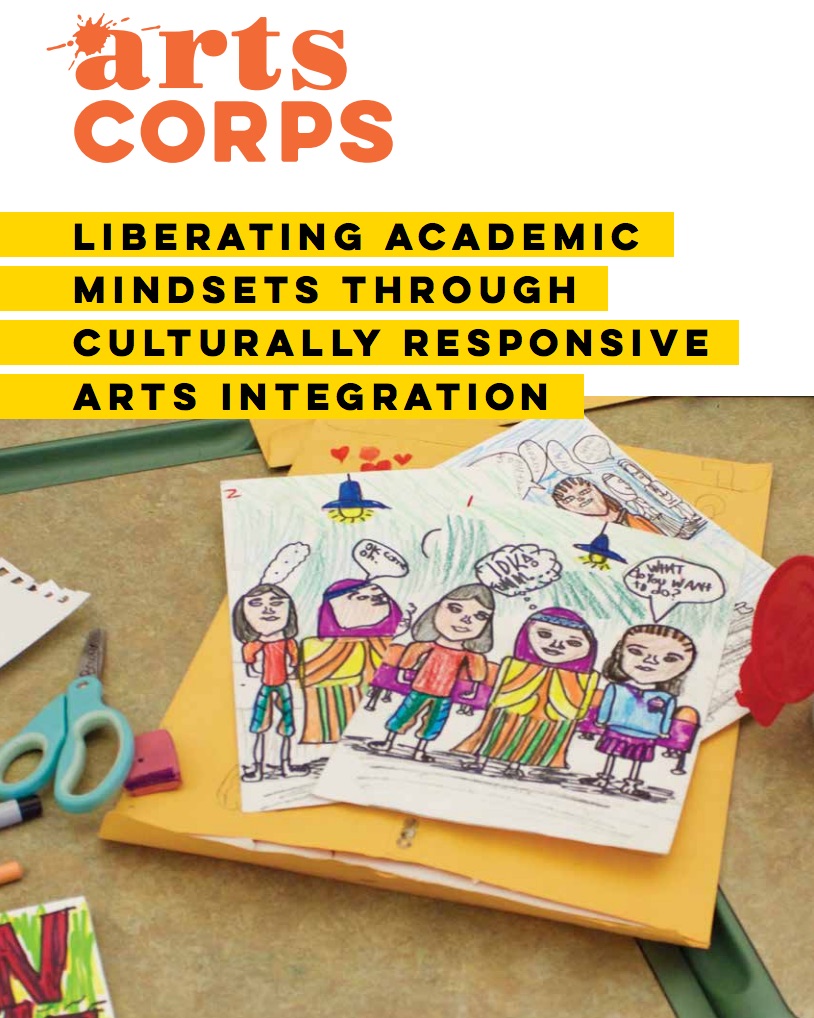
Liberating Academic Mindsets Through Culturally Responsive Arts Integration
A new report on Arts Corps' Highline Creative Schools Initiative by WolfBrown and MEMconsultants
" />
 Liberating Academic Mindsets Through Culturally Responsive Arts Integration
Liberating Academic Mindsets Through Culturally Responsive Arts Integration
A new report on Arts Corps’ Highline Creative Schools Initiative by WolfBrown and MEMconsultants
Liberating Academic Mindsets Through Culturally Responsive
Arts  Integration
Integration
WolfBrown and MEMconsultants
Published May, 2019
Arts Corps’ Highline Creative Schools Initiative (HCSI) Report shares the intentions, implementation, and results of a multi-year Department of Education Arts in Education Model Development and Dissemination (AEMDD) project. Through the project, a substantial partnership was developed between Arts Corps and the Highline School District, a region just south of Seattle, Washington. In the associated evaluation, we worked with researchers to examine the impact that partnerships between classroom teachers and teaching artists have on 5th and 6th grade students’ academic mindsets and behaviors, school climate, and their transition to middle school. During the grant period, HCSI delivered high quality, social justice-oriented arts integration to all 5th and 6th graders in four public schools. The project included professional development on academic mindsets, arts integration, and race and social justice for all participating teachers. The research included eight elementary schools, four as treatment schools that hosted Arts Corps in all 5th and 6th grade classes for three years, and four as comparison schools that participated in all research measures but did not experience Arts Corps programming in 5th and 6th grade.
Findings show that the students in the four treatment schools exhibited higher levels of learner behaviors, strengthened their academic mindsets and increased their ELA and math test scores when compared to students at the four control schools. These impacts were particularly marked for young people whom the district characterized as needing Individual Education Plans (IEPs) due to any of a range of disabilities. This study shows that carefully planned, culturally responsive arts integration and thoughtful collaboration between teaching artists and classroom teachers can help close the achievement gap faced by students from marginalized communities, like those in the Highline School District.
Click here to read the full report.
 Liberating Academic Mindsets Through Culturally Responsive Arts Integration
Liberating Academic Mindsets Through Culturally Responsive Arts Integration Liberating Academic Mindsets Through Culturally Responsive Arts Integration
Liberating Academic Mindsets Through Culturally Responsive Arts Integration Integration
Integration